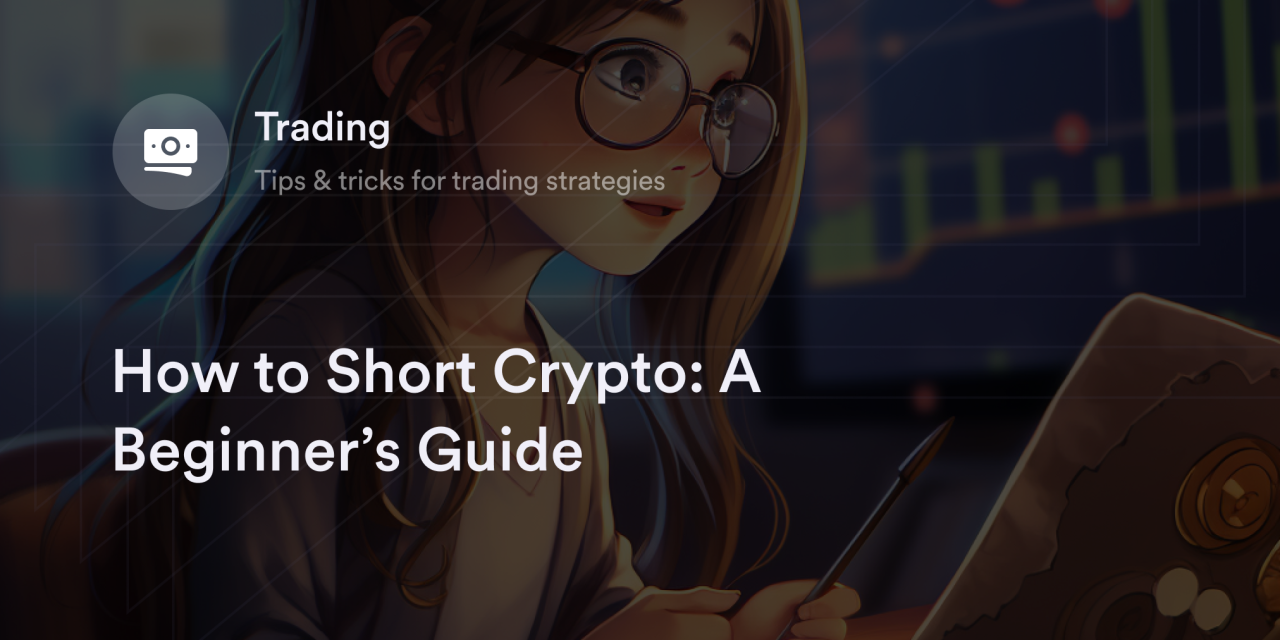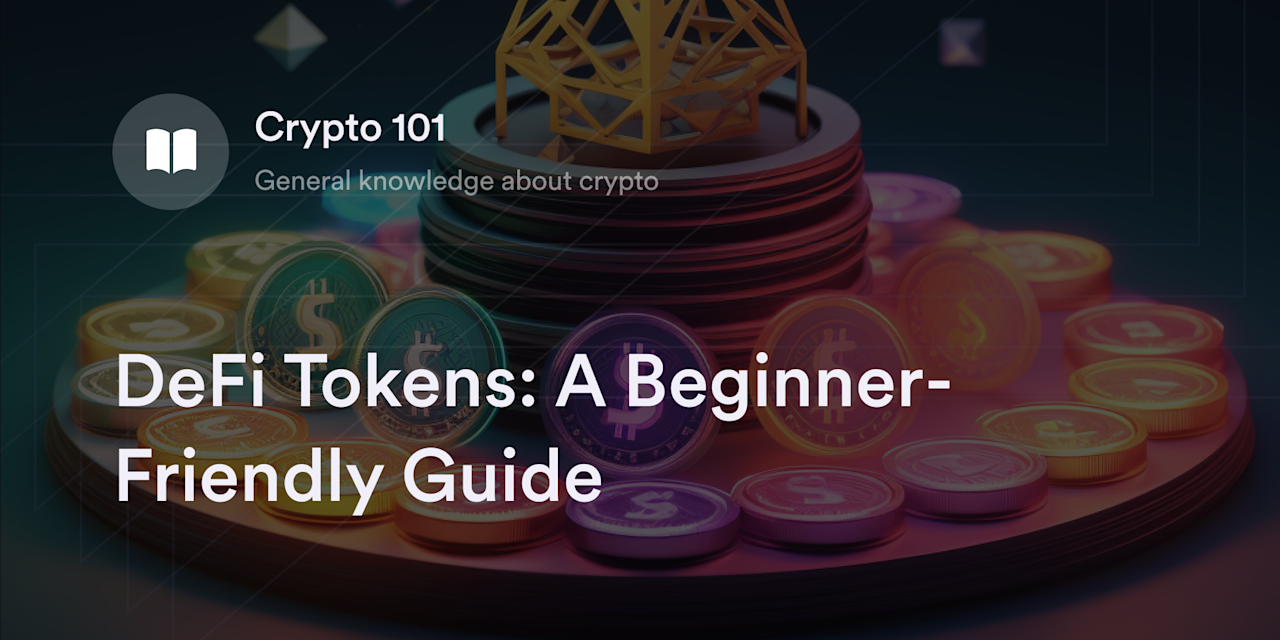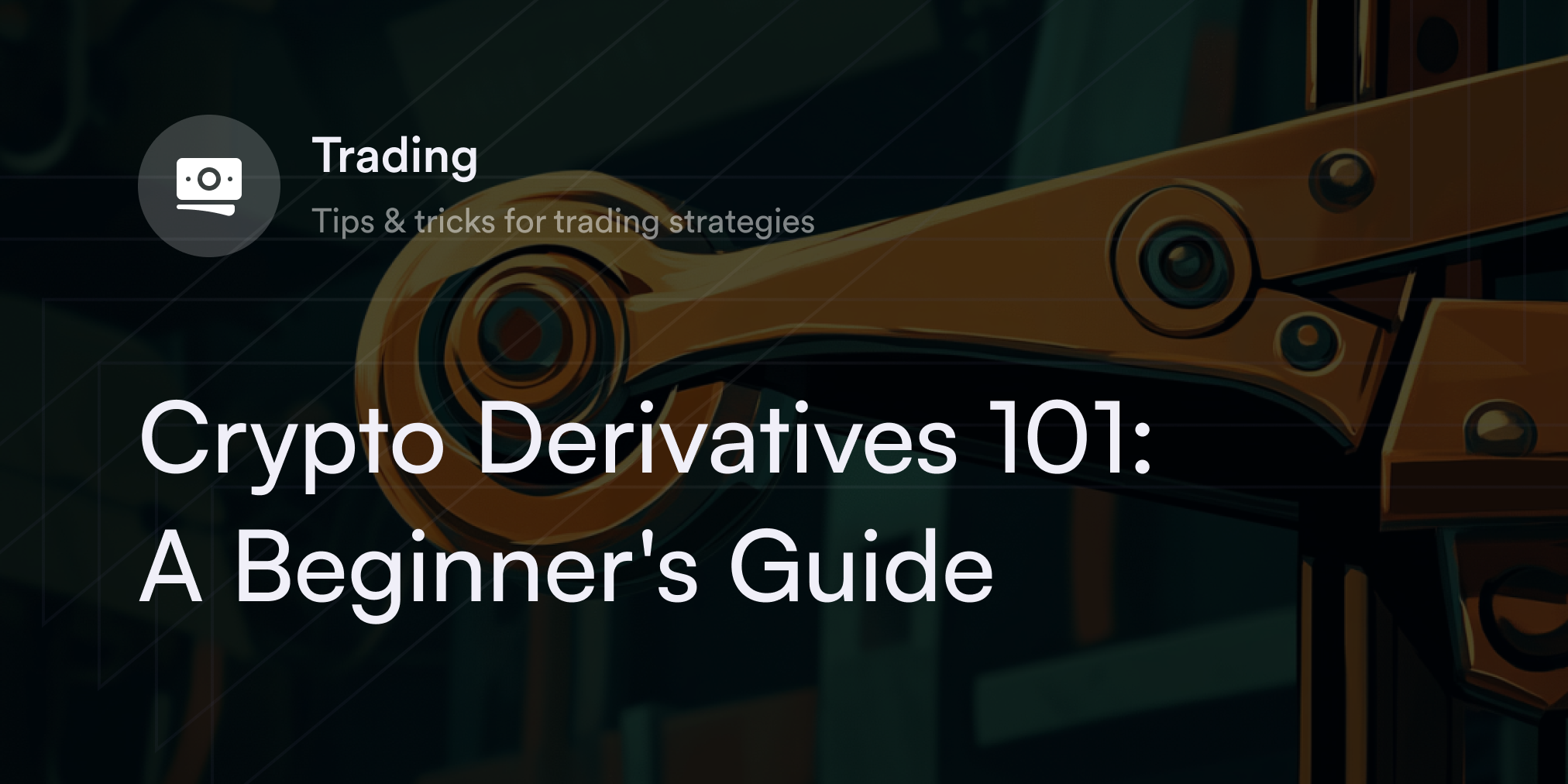


The standard, base-level trading advice for any asset is to "buy low and sell high." In other words, traders should buy a stock or cryptocurrency they believe in and wait until it rises in value, then sell it for a profit.
But what if you’re confident that an asset will actually decrease in value? There’s still a way to capitalize on your convictions and it’s called “short selling.” Short sellers want their target asset price to fall to zero—that’s how they make money. As counterintuitive as "shorting" may seem, it accounts for billions of dollars in trading activity every year.
Traders who want to bet against digital assets need to know how to short crypto and mitigate losses. Although shorting can prove to be profitable, investors should understand the risks of this strategy and learn how to protect their portfolios before diving in.
What is shorting?
"Shorting" (or "short selling") is a trading strategy that profits when an underlying asset falls in value. A short seller believes whatever they're trading is overvalued and will soon trade at a lower price. To take advantage of this price decline, short sellers usually borrow funds from an exchange to sell their chosen asset and (hopefully) repurchase it at a lower price.
Since short sellers have a negative opinion of an asset's price, it's known as a "bearish" trading strategy. Unlike "bullish" strategies, which expect an asset’s price to rise in value, "bearish" traders think current valuations are too high and will soon fall.
For instance, if a trader believes Ethereum (ETH) will fall after researching price projections, they first borrow money from their broker to sell ETH on the market. Let’s assume ETH is trading at $2,000 per coin before its earnings call and $1,800 afterward. In this scenario, the short seller buys back their borrowed ETH position at a discount. Excluding commission and interest fees, this means the short seller makes a $200-per-coin profit on their ETH trade.
Short selling is commonly associated with stocks, but it's possible to short any tradeable asset. For instance, you can short crypto, foreign currencies, ETFs, and options. As long as a trading platform has a short selling function, traders have the option to use this bearish strategy.
How to short the crypto market: Three common strategies
As their name implies, "short sellers" sell cryptocurrency as an opening trade and hope to rebuy these coins at a lower price. While the most common way to short crypto is to borrow funds from a cryptocurrency exchange, there are a few derivative products for those interested in shorting the cryptocurrency market.
Trade on margin
The traditional way to short sell the cryptocurrency market is to first borrow cryptocurrency (or "margin") from a broker to sell it on the open market. Since traders use borrowed funds in this strategy, they must repay their loan plus whatever interest their broker charges. Short sellers bet the price of their borrowed cryptocurrency will fall in the short term so they can buy it at a lower price and profit from the difference.
For example, a short seller sells BTC at $15,000 with borrowed funds and waits for a price decrease. If BTC goes down to $10,000, the trader could buy BTC to repay their loan and pocket the $5,000 difference (excluding commissions and interest fees). However, if BTC keeps rising, the short seller must spend more to close their loan.
Many crypto exchanges, such as Kraken and Binance, offer margin trading services, but each has unique fee schedules and minimum account requirements. Traders must review their exchange's specific terms and conditions when developing their short selling strategy.
Short futures contracts
Futures contracts are derivative products that grant traders price exposure to underlying assets, including cryptocurrencies, so they don’t have to actually hold them. Instead of requiring traders to buy a coin, futures are agreements between traders speculating on the future price of a cryptocurrency. Each futures contract has a set supply of a cryptocurrency, a target price, and an expiration date at which contract sellers need to fulfill their obligation. For example, if a Bitcoin futures contract is worth 1 BTC at $20,000 by March 31st, 2023, a futures seller needs to repay $20,000 worth of BTC to whoever holds this contract.
In the context of short selling, traders sell futures contracts with a higher target price (called a "strike price") that they expect the cryptocurrency to trade for in the future. For example, if Ethereum is trading for $1,500 per ETH, a short seller could sell a short futures contract for 1 ETH at $2,000. As long as Ethereum stays below $2,000 before the expiration date, the short seller keeps the money they received for selling their contract. However, if ETH reaches $2,000 before a futures expiration date hits, the trader needs to buy 1 ETH at market price to fulfill their agreement.
Although traditional futures contracts have expiration dates, cryptocurrency platforms like dYdX now offer eligible traders short and long perpetual futures. Unlike other futures products, perpetuals don't have an expiration date and use a dynamic fee-and-rebate system to incentivize eligible traders depending on market conditions. With a perpetual contract, short sellers never have to worry about repaying a contract buyer by a specific date.
Contract for Difference
Contracts for Difference (CFDs) are similar to futures, but they don't trade on public markets, nor are they available in every jurisdiction. Like futures contracts, traders buy or sell a CFD for an underlying cryptocurrency at a specific price to bet on its future price movement. Short sellers sell a CFD using borrowed funds and try to buy back the contract at a lower price.
Since all CFD transactions take place off public exchanges, traders must work with over-the-counter (OTC) services. OTC trading platforms tend to be riskier than the regulated and transparent futures market, but they give traders greater flexibility when setting up the terms of their CFD trade. Just remember that some countries, including the U.S., have banned CFDs, so traders must review their local laws before using this method.
What are the benefits of shorting cryptocurrency?
Short selling allows traders to profit while cryptocurrencies are going down. Instead of buying digital assets and hoping they increase, traders can enter a position if they expect coins and tokens to fall in value. Anyone who feels a cryptocurrency is due for a downturn has the power to take advantage of the situation with short selling.
In addition to profiting during a market correction, short selling makes it easier for traders to "hedge" their positions. For traders, "hedging" refers to opening an opposite trading position to offset potential losses in a long-term portfolio. For example, a trader with a substantial amount of BTC may open a short Bitcoin position to profit from a short-term downtrend. In this case, even if the value of BTC falls, the trader reduces the average purchase price for their long-term BTC by collecting short-term profits.
What are the risks associated with shorting crypto?
Shorting exposes traders to infinite potential losses. Since there's no upper cap on any asset's price, there's theoretically no limit to how much short sellers can lose. If cryptocurrencies double, triple, or quadruple in value, short sellers stand to lose more than 100% of their position. By contrast, the worst-case scenario for a long-term holder is their cryptocurrencies going to zero.
Also, if many traders are shorting an asset at the same time, there's a chance for a "short squeeze." Think of short squeezes as the opposite of panic selling during a market crash. In a short squeeze, a crypto's price rapidly rises as more short sellers buy the underlying asset to repay their loans. The increased buying pressure from hundreds or thousands of short sellers triggers a massive rally in a cryptocurrency's price, thus increasing every short seller's losses.
Another disadvantage of short selling is the extra fees traders have to pay to maintain their positions. Typically, exchanges charge commissions and interest fees to take out short loans. Even if short sellers work with futures contracts or CFDs, they have to pay extra to keep their trades open. No matter how long a person shorts a cryptocurrency, these fees eat into any potential profits.
Safety tips for shorting cryptocurrency
Short selling creates more opportunities for profit, but it also puts them at risk of losing over 100% of their portfolio. Thankfully, there are ways to minimize loss potential when setting up a short strategy:
Use stop-losses: Stop-losses are limit or market orders that automatically sell a cryptocurrency at a pre-set price. For instance, a short seller who sold Bitcoin at $20,000 may set a stop-loss to buy BTC at $25,000. In this scenario, the trader only loses $5,000 if their short strategy doesn't go according to plan. Exchanges like dYdX offer eligible traders stop-loss functions to help them manage their crypto portfolios.
Review technical analysis patterns: Technical analysis is a branch of market research focusing on price levels and chart patterns rather than a cryptocurrency's fundamental metrics (e.g., network activity, total wallet addresses, global adoption, and more). Short sellers often use technical tools such as Bollinger bands, moving averages, and Fibonacci levels to determine the best places to take profits or set stop losses. Although technical analysis isn't an exact science, it helps traders determine when they feel most comfortable entering and exiting a short position.
Check short interest on different assets: "Short interest" is the percentage of people shorting an asset. For example, if Tesla (TSLA) has a 15% short interest, then 15% of people trading TSLA shares are shorting them. Stocks or cryptocurrencies with a greater short interest tend to have greater volatility and a higher probability of a "short squeeze."
Learn how to long and short crypto on dYdX
dYdX makes it easy for eligible traders to open long or short positions on dozens of cryptocurrencies with perpetual contracts. Eligible traders who link their crypto wallets to dYdX gain access to decentralized derivatives trading for Bitcoin and altcoins with up to 20x leverage. For more information on how to long and short crypto on dYdX, head over to our blog and Academy and learn how to use our exchange's tools.
Terms & Conditions and Disclosures
The opinions and information presented in this article (the “Article”) are provided for general information purposes only. Reference to any specific content, product, service or entity does not constitute an endorsement or recommendation by dYdX Trading Inc., or any affiliate, agent or representative thereof (“dYdX”). The content provided in this Article does not constitute, and should not be considered, or relied upon as, financial advice, legal advice, tax advice, investment advice or advice of any other nature; and the information in this Article is not a call to action to make any investment, or purchase any crypto-asset, of any kind (collectively, the “Service”). By using the Service, you agree that you are responsible to conduct independent research, perform due diligence, and engage a professional advisor prior to taking any financial, tax, legal or investment action related to the subject matter hereof.
Any applicable sponsorship will be disclosed, and any reference to a sponsor in this Article is for disclosure purposes, or informational in nature, and in any event is not a call to action to make an investment, acquire a service or product, or purchase crypto-assets. This Article does not offer the purchase or sale of securities. By using the Service, you agree that dYdX is not responsible, directly or indirectly, for any damage or loss incurred by you in connection with the use of or reliance on the Service, including any content, products, services or entity mentioned in this Article.







